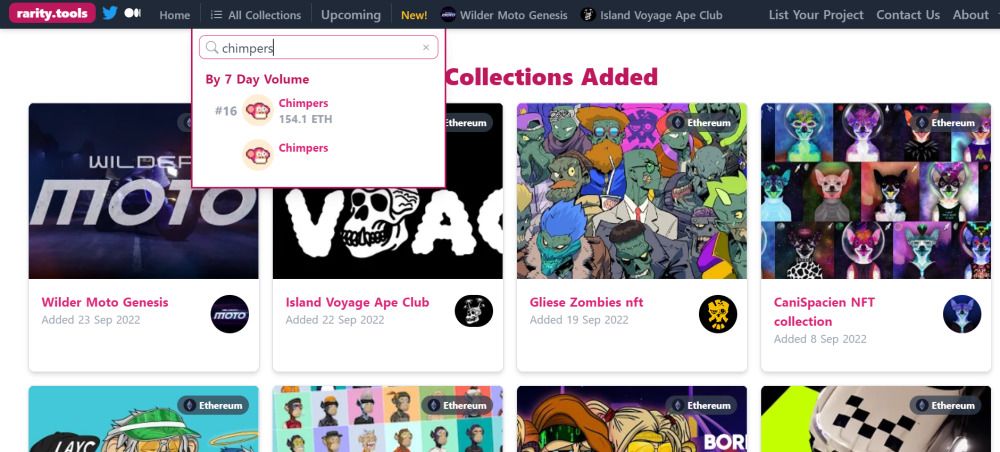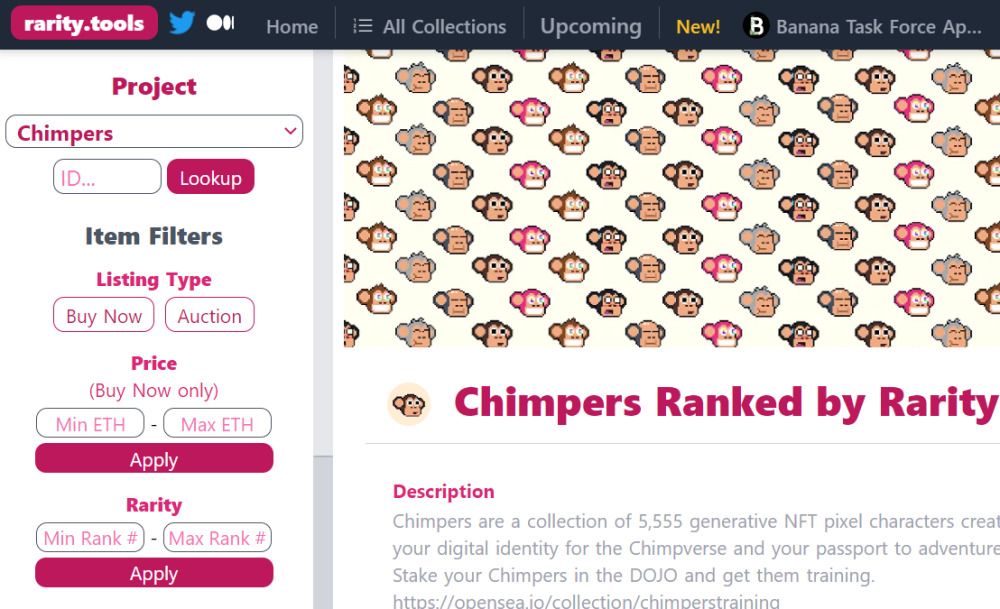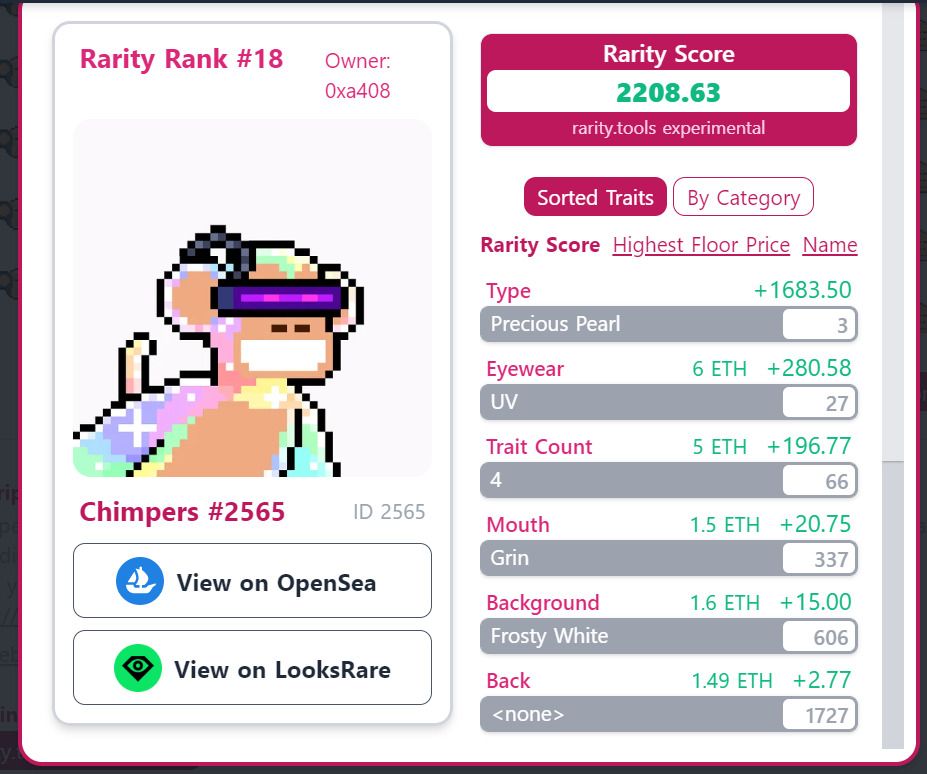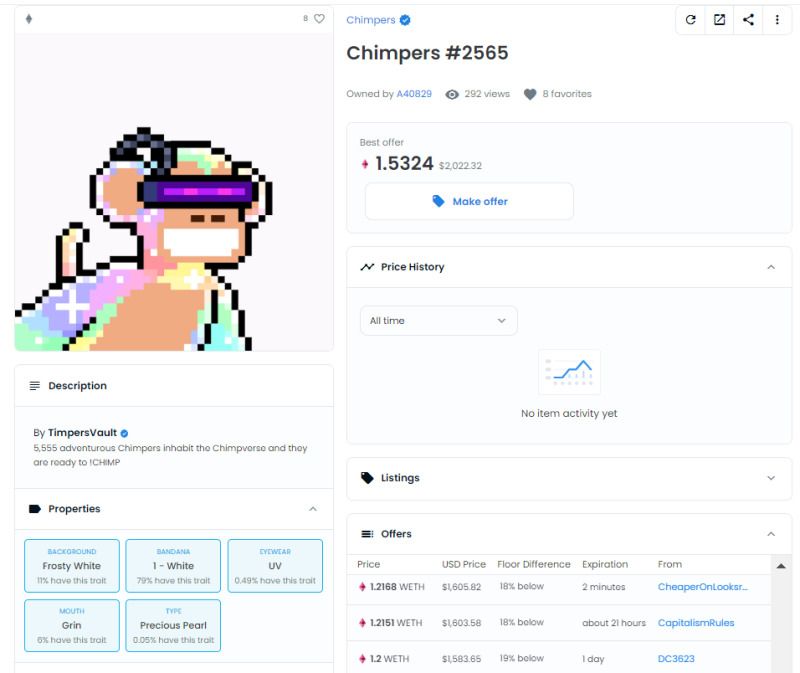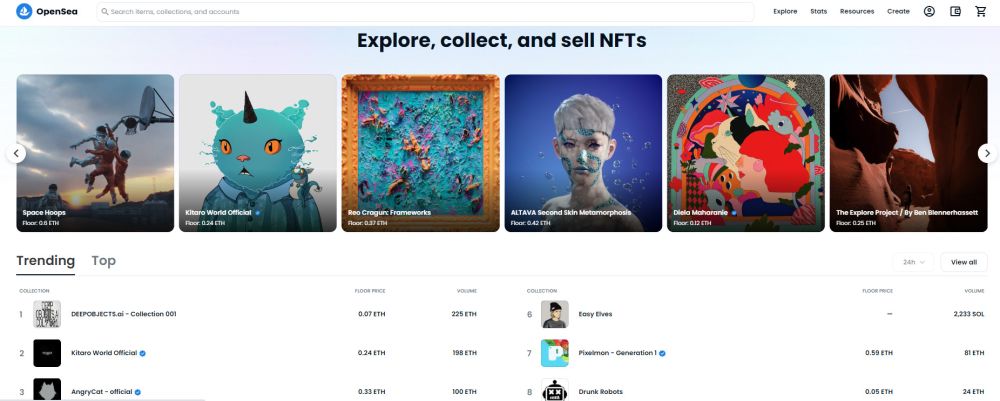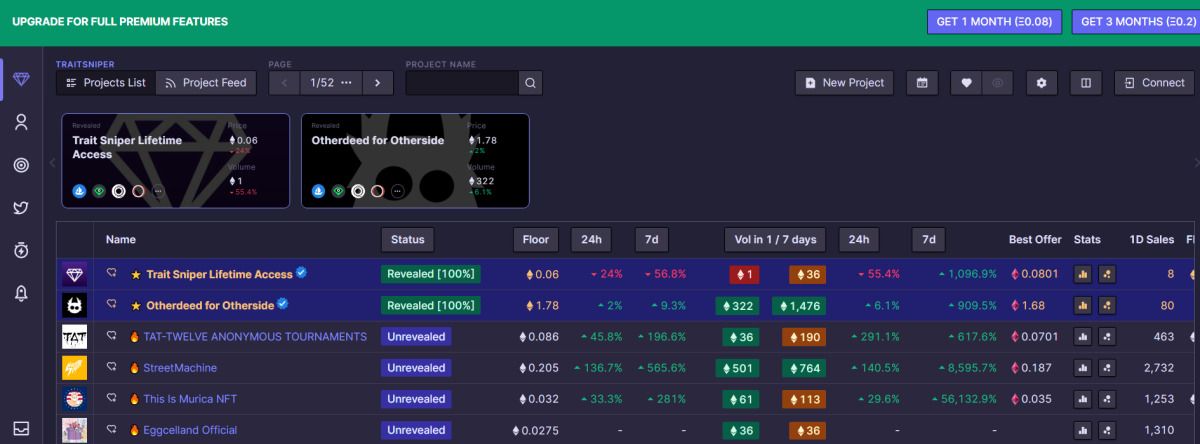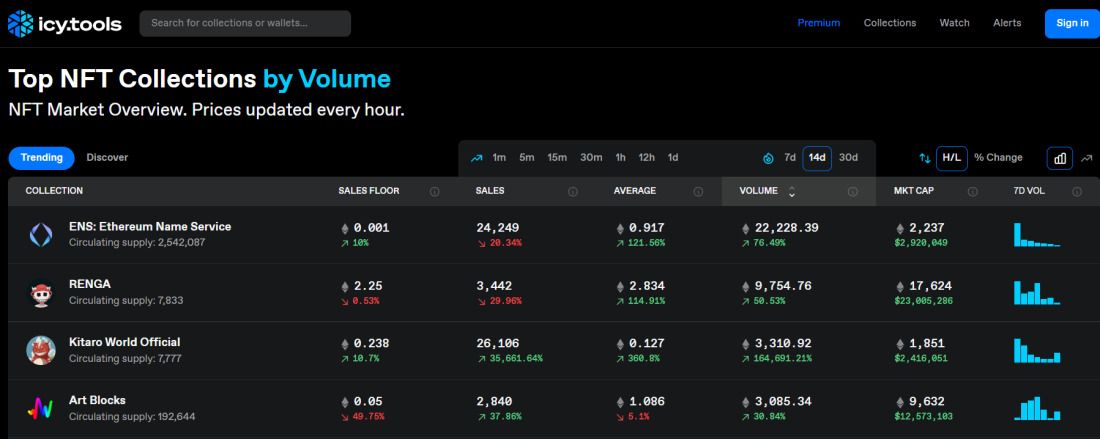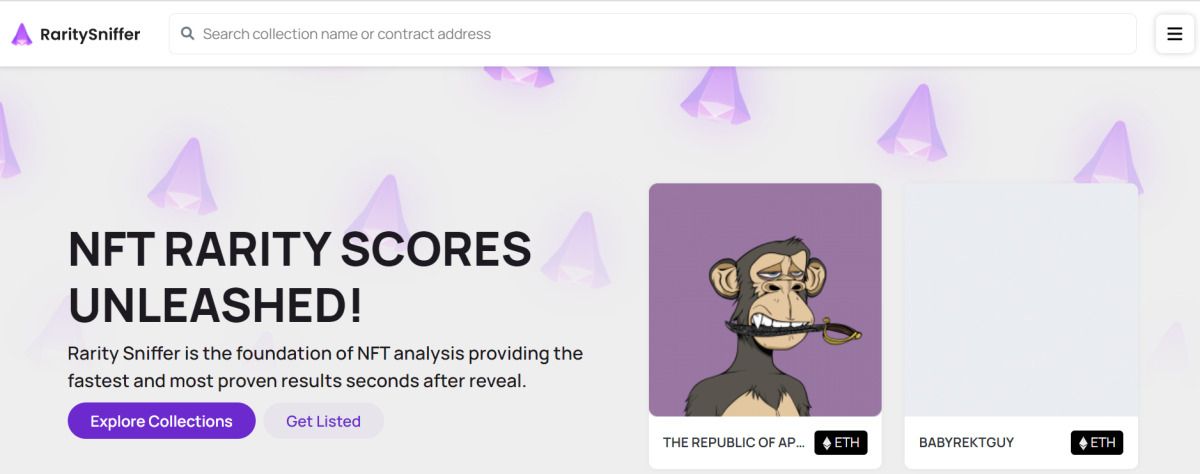Non-fungible tokens (NFTs) are extremely valuable; However, it can be difficult to find those with the greatest potential. Rarity.tools is one of the best NFT rarity detection tools, arguably the most popular which is also free to use. It has an easy-to-understand user interface and has all the data you need to make smart decisions regarding your NFT assets.
With that in mind, here’s everything you need to know about NFT rarity and how to use Rarity.tools to find the rarity of an NFT and set up alerts for the rarest NFTs.
What is NFT rarity?
NFT rarity measures the number of rare and unique NFTs in a particular collection, their supply and demand at any given time. The rarest NFTs are those that are scarce and highly sought after at the same time. In most cases, these rare NFTs will increase in value as more people want them.
This is why it is important to know how rare an NFT is before selling or investing in an NFT.
Rarity.tools is one of the most popular tools that ranks generative art and collectibles based on rarity. It provides a clear and logical assessment of the rarity of specific collectibles and can be used to determine how uncommon NFTs are. With this information, NFT collectors can value and compare the relative value of individual NFTs.
You can filter NFTs on Rarity.tools based on peak collections, total sales volume, average price, and number of owners. Furthermore, you can use it to learn about top gatherings, such as Flyfish Club and Bored Ape Yacht Club, and upcoming projects. Rarity.tools has a clear and appealing interface that makes it easy to determine NFT rarity.
There are several methods of calculating an NFT’s rarity, each giving a different score.
Some methods use the average rarity of each trait expressed by an NFT to calculate total rarity. Other methods ignore the rarity of all other traits and consider the rarest trait. Some people multiply all the rarity values of the traits listed in an NFT combined.
Finally, different methods give different results and incomplete assessments. For example, some methods overestimate the rarity of all features in the collection, while neglecting the extraordinary rarity of some outlier features. Others give an inaccurate impression by concentrating on an NFT’s rarest characteristic and downplaying the importance of other rare characteristics.
Rarity.tools Rarity Score of a property value
This calculation has been arrived at using this formula:
1 ÷ ([Number of Items with That Trait Value]/[Total Number of Items in Collection])
The best NFT marketplaces use this basic equation as the gold standard since it consistently delivers the same results.
Ranking of rare traits
This method does not compare the overall rarity of the item, but the rarest trait of each NFT to the entire collection. NFT features are features or characteristics that make the NFT unique, such as accessories, backgrounds, properties, and so on.
Average trait rarity
This method considers the overall rarity of the NFT’s properties, but does not take into account any rare properties of the NFT. Because of this, a unique property of NFT may be diminished by other properties.
For example, consider an NFT with three properties with probabilities of 5%, 15%, and 25%. This NFT will have an average trait rarity of (5+15+25)/3=15%.
This example shows how the relative prevalence of the other two traits overshadows the first trait, which has a rarity of 5%.
Statistical rarity
It determines the overall rarity by multiplying all trait rarities together. Therefore, based on the previous example, the overall NFT rarity would be (5% × 15% × 25%) = 18.75%.
You may have received an NFT coin in a generative collectibles and are curious to see how rare it is.
Let’s say you have minted a Chimpers #2565 collectible and want to see how rare it is. How to check:
- Go to Rarity.tools. Keep the mouse pointer on All collections, then use the search field to find Chimpers project.
- You can search for Chimpers using ID, Listing Type (Buy It Now or Auction), Price (min. to max. ETH)and Rarity Ranks (Min to Max Rank #s) in the left sidebar of the resulting data dashboard.
- If you want to know what your character is made of in this hypothetical scenario, enter 2565 into the ID search area and click Look up. Then a pop-up window will appear similar to the one below.
- As shown in the image above, Chimpers 2565 has a rarity rating of #18. Out of the 5,555 Chimps, the site currently ranks this NFT as the 18th rarest in its series. With additional data, you can expect these numbers to change.
- You can see how NFT’s rarity score now +2208 for Chimpers #2565, was calculated in the image above. Rarity.tools also displays, via OpenSea, the highest floor prices available for a given period for a given NFT property.
There are other tools besides Rarity.tools that you can use to calculate NFT rarity. These rarity tools each have their own method of calculating an NFT’s rarity score.
1. OpenSea
OpenSea is a great tool for determining the rarity of your NFTs based on the number of copies in circulation. It is also easy to use; enter the name or ID of an NFT and it will return how many copies exist, how much they sell for, what percentage of all transactions they represent, and so on.
All this information helps you understand whether you should buy a particular item at the current price, whether you should wait until after it has increased, or whether it is better to sell some items before they decrease in value.
2. Trait sniper
With features like bulk bidding, advanced automatic sniping and instant ranking, Trait Sniper is openly aimed at “expert traders”. NFT flippers rush to get the best deals, which they immediately re-list at a higher price in hopes of making a quick profit after Trait Sniper scans a collection and displays the pieces in ranked order.
The free and premium versions of Trait Sniper offer different levels of monitoring access. For example, purchasing an Alpha Sniper pass gives you access to instant notification of newly unveiled NFT collections and their rarity points, compared to the one-hour wait for free users. It’s only worth using Trait Sniper if you’re willing to pay, among other things.
3. Ice cold tools
Icy.tools is a service with several great analysis tools launched in the middle of the NFT industry boom. You can easily find hot projects on the platform and follow floor prices, volume and other information.
On the Icy.tools platform, many of the tools are free, and you can unlock premium features for a somewhat low monthly fee. NFT maximalists prefer the company because it has a voice that aligns well with the values of the NFT community.
4. RaritySniffer
Like Traitsniper, RaritySniffer offers the latest rankings of new NFT projects based on their rarity. In addition, the platform only displays sniffed projects for free users and provides information on the latest NFT collections.
Users must subscribe to the Discord channel to get more analysis of potentially rare NFTs. This provides unique access to the rarity status of newly minted NFTs that have been scented before being made available to the general public.
Why Rarity Matters for NFTs
Rarity is an important factor when determining the value of any NFT. NFT Rarity Tool helps ensure you get the most accurate estimate of rarity possible. Furthermore, they make it easier to get the best price on a given NFT if it turns out to have a lower rarity than you originally thought.
So if you like to collect rare items or want to make sure your NFTs have the best value before putting them up for sale, using one of these tools is something you should consider doing. They will take the guesswork out of finding out how rare NFTs are so you can confidently buy or sell digital assets.
